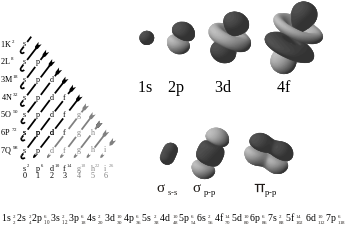Supernova and Electron Clouds
So yesterday I get invited to participate on a talk show called “The 2nd Question” as one of the panelists (that is me as Phelan Corrimal 2nd from the right). And the show starts off with their standard question — if you where an element what element would you be. Now – if you watched the video you’ll no doubt notice I copped out and instead decided that I would rather be an electron particle than an element. It seems such a silly little question but it did get me thinking about the nature of matter – which led to wikipedia – which of course meant I got sucked into 25 different cross linkages about matter and energy and time and … Well, you get the picture.
Or actually, maybe you don’t. You see I didn’t either until I started going back to my University physic and chemistry days and started thinking about the nature of atomic orbitals and then started to compare pictures from another fascination of mine, astronomy. So take this picture for example
The essence of atomic orbitals is that as the number of protons, neutrons, and electrons increases, the shape of the atomic orbitals reconfigures itself so as to represent the minimum amount of energy to bind the electrons to the nucleus. So for Hydrogen with only 1 electron, the electron orbital property is given by the 1s orbital layer whereas carbon’s 6 electronic would involve 2 x 1s, 2 x 2s, and 2 x 2p atomic orbitals.
Loosely translated then, as atoms get larger in atomic mass their electron shells start to look more and more like an onion however where each layer looks like either an s-type, p-type, d-type, or f-type layer of skin in a massive and tightly packed jigsaw puzzle arrangement. (See WebElements for more)
What I found interesting in considering the question of “what element am I” was the symmetry I began to see when looking at these atomic orbitals and various pictures of supernovae. Take for example these images taken over the last 4-5 years from Hubble:

Ring Around Supernova 1987A (SN1987A) - January 8, 1999

Supernova 1987A: Halo for a Vanished Star

Dust Disk Fuels Black Hole in Giant Elliptical Galaxy NGC 4261
Now what fascinates me about these sets of images is how remarkably similar they are. Yes you could argue that because of the nature of spinning disks and the collection of matter and the way the light shines through the surrounding material that this is simply just a trick of the light – blah blah blah.
But what if its not? We are talking about thought experiments here so let’s throw out conventional wisdom for a moment and assume that somewhere along the way we missed the boat.
The old school of thought before quarks, leptons, and bossons was that the nucleus could be considered akin to a sun and the electrons planets. Now consider reworking that very simple analogy and instead each electron were akin to a individual sun on a micro level. Obviously stars have constituent parts just like electrons do. And funnily enough, the pattern of atomic orbitals look remarkably similar to that of nova and supernova. Is there a connection which is far more simple that what physics is trying to develop currently?
One possible implication is that atoms are essentially constantly in the process of atomic nova on a per electron basis which may explain why the patterns produced in nova and atomic orbitals are so similar. Especially if each ‘electron explosion’ can only occur in series rather than in parallel. What we are seeing then may simply be the resonance of quantum strings vibrating in response to these little electron novas occurring which give the perception of uncertainty when in fact none exists. If each micronova occured in series then it would effectively shape each successive micronova that followed leading to the patters we see in the atomic orbitals. I dunno but this is going to be interesting following the chain of logic to see where it may break down. -K
